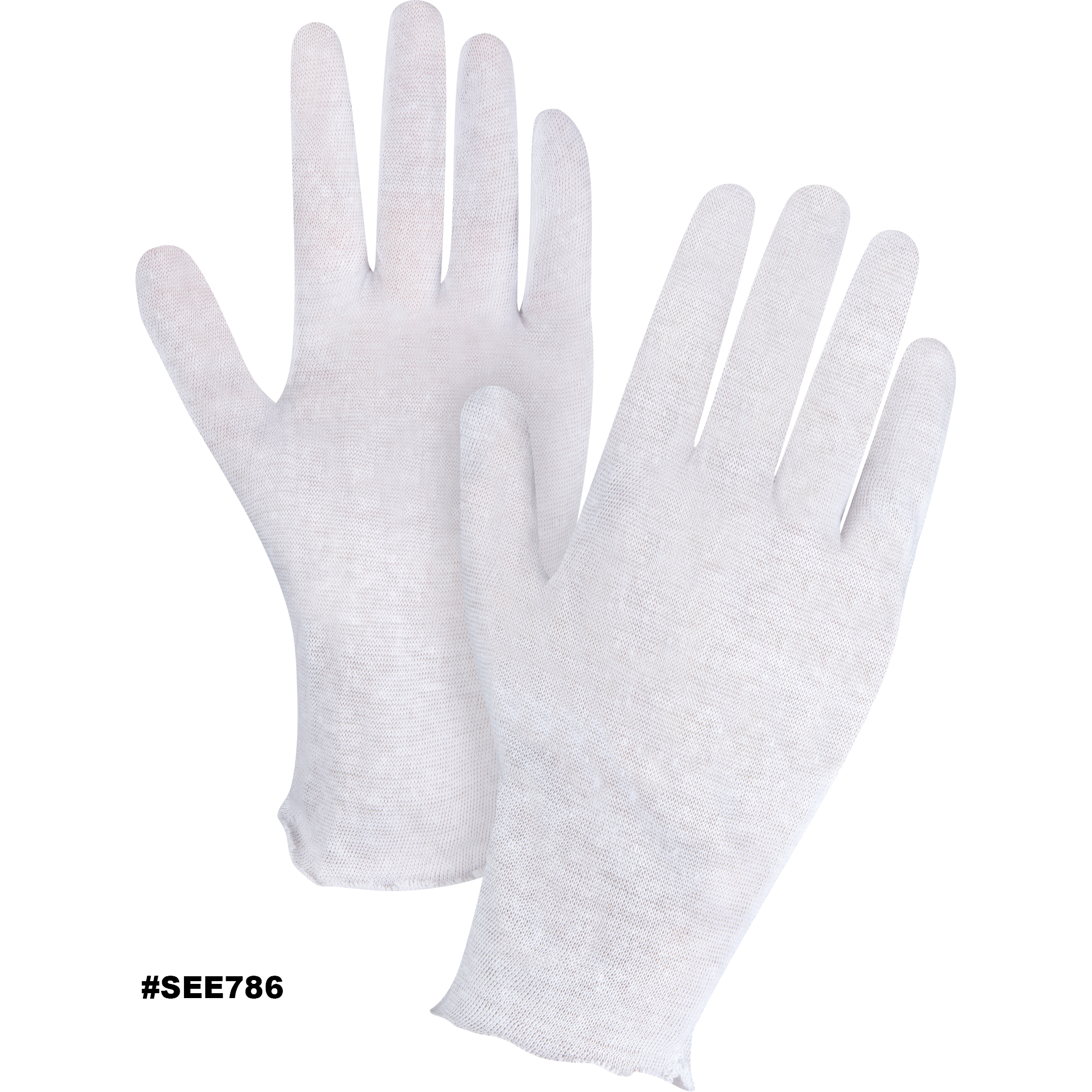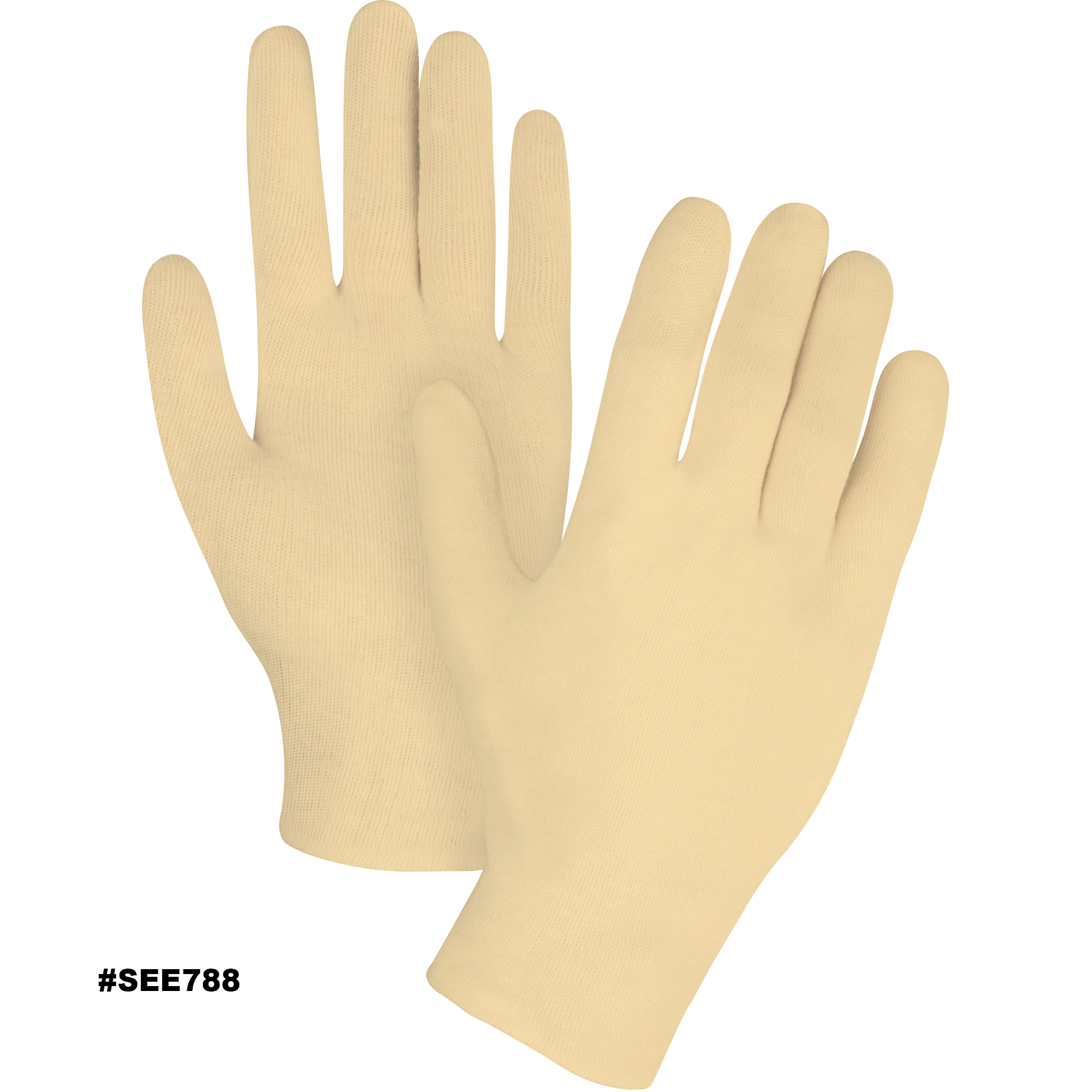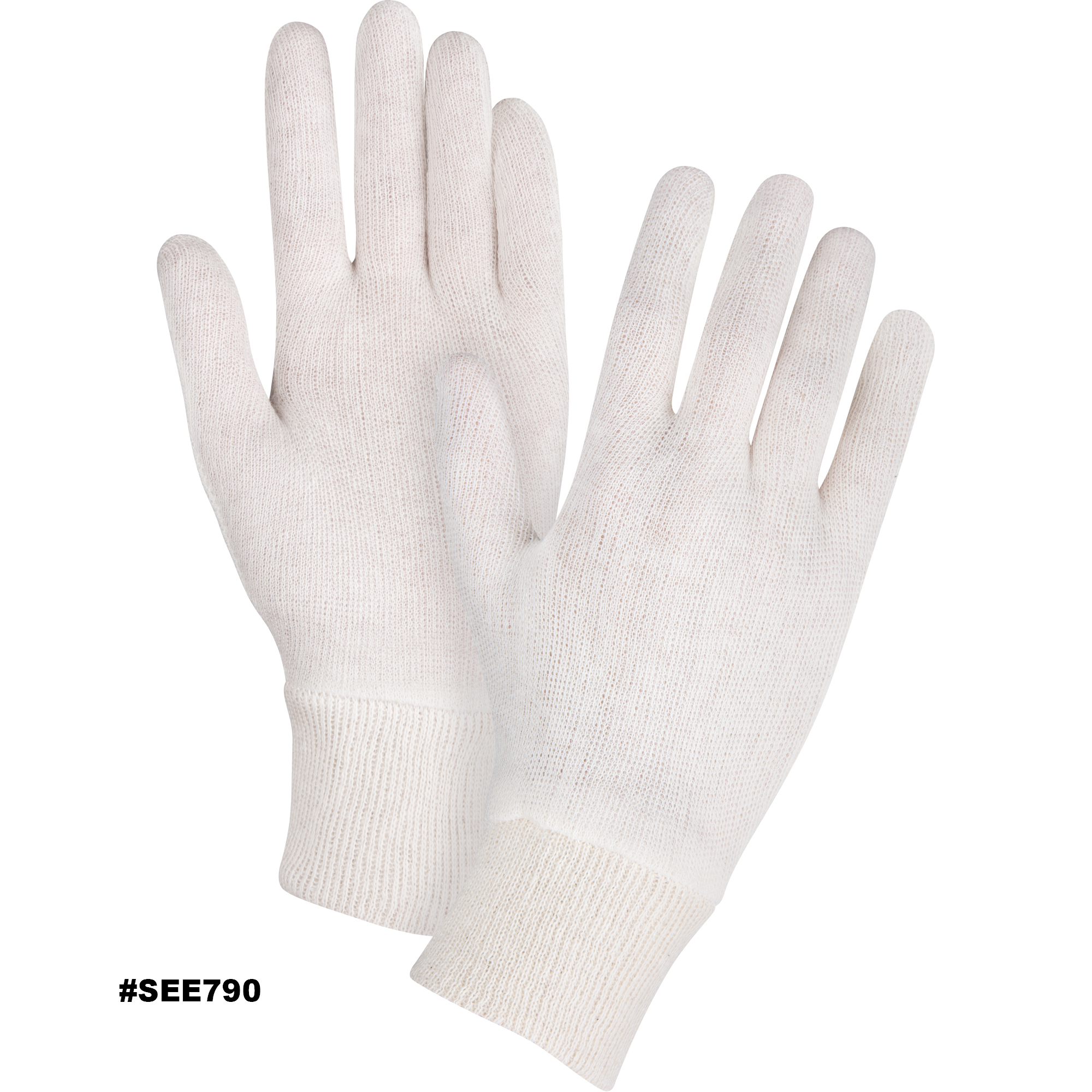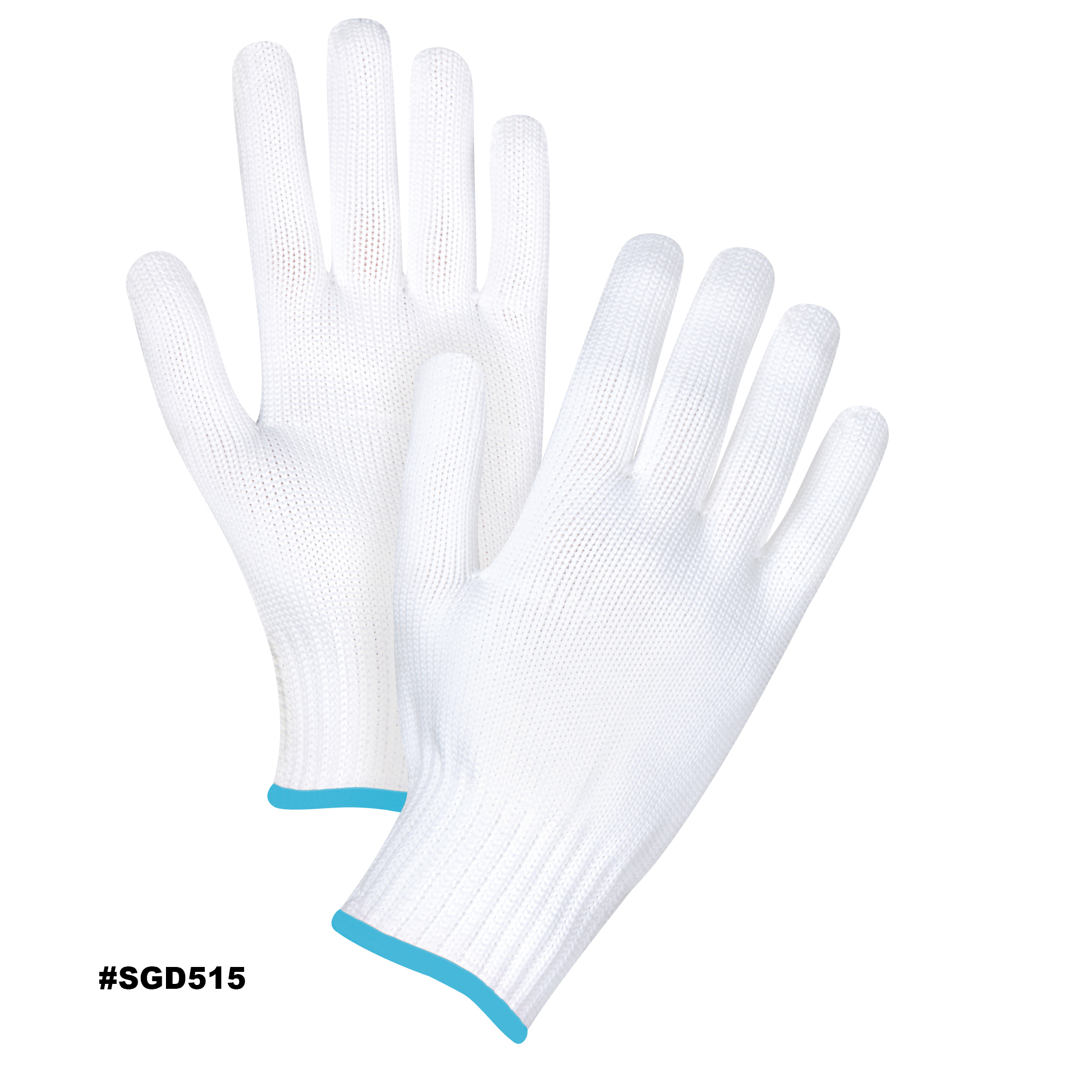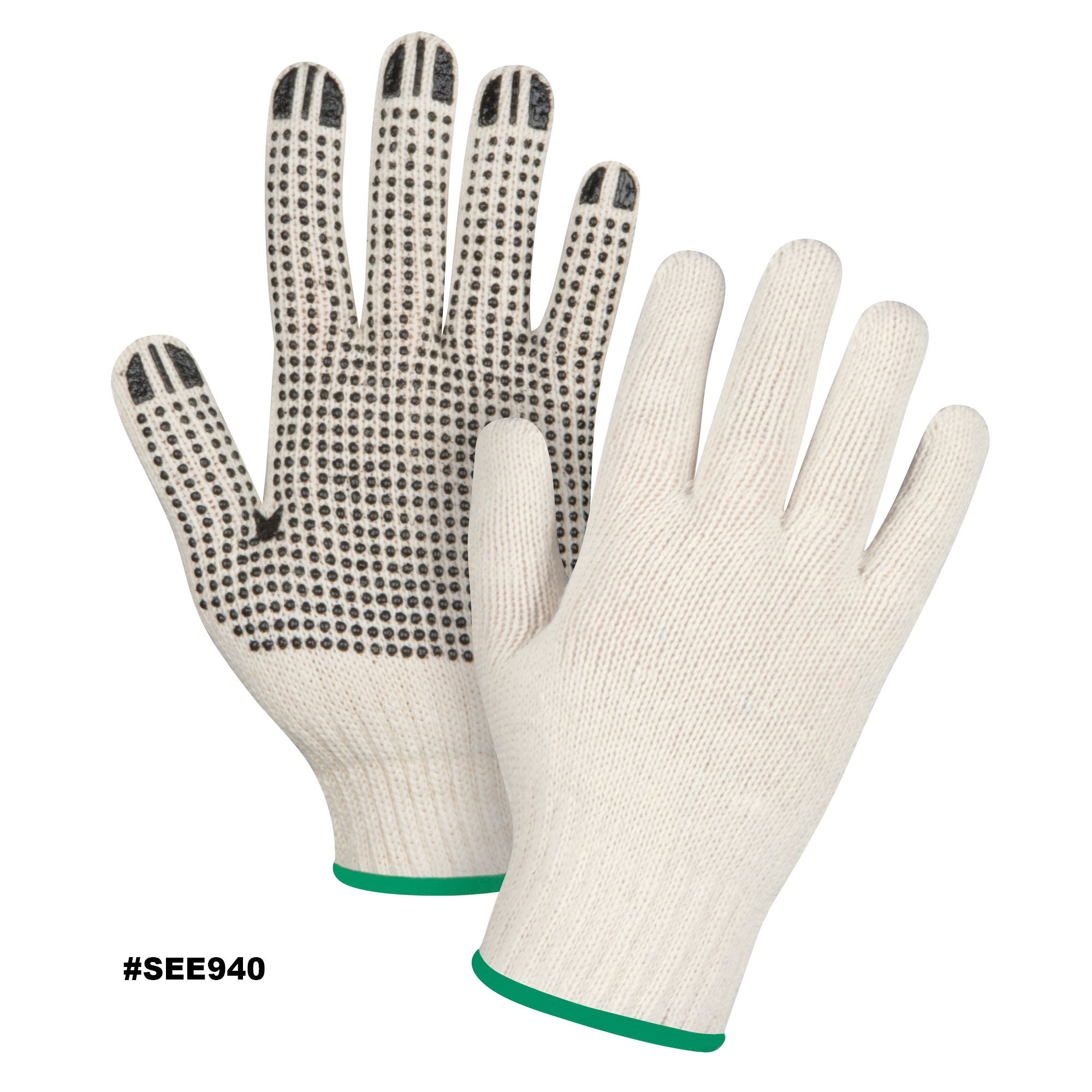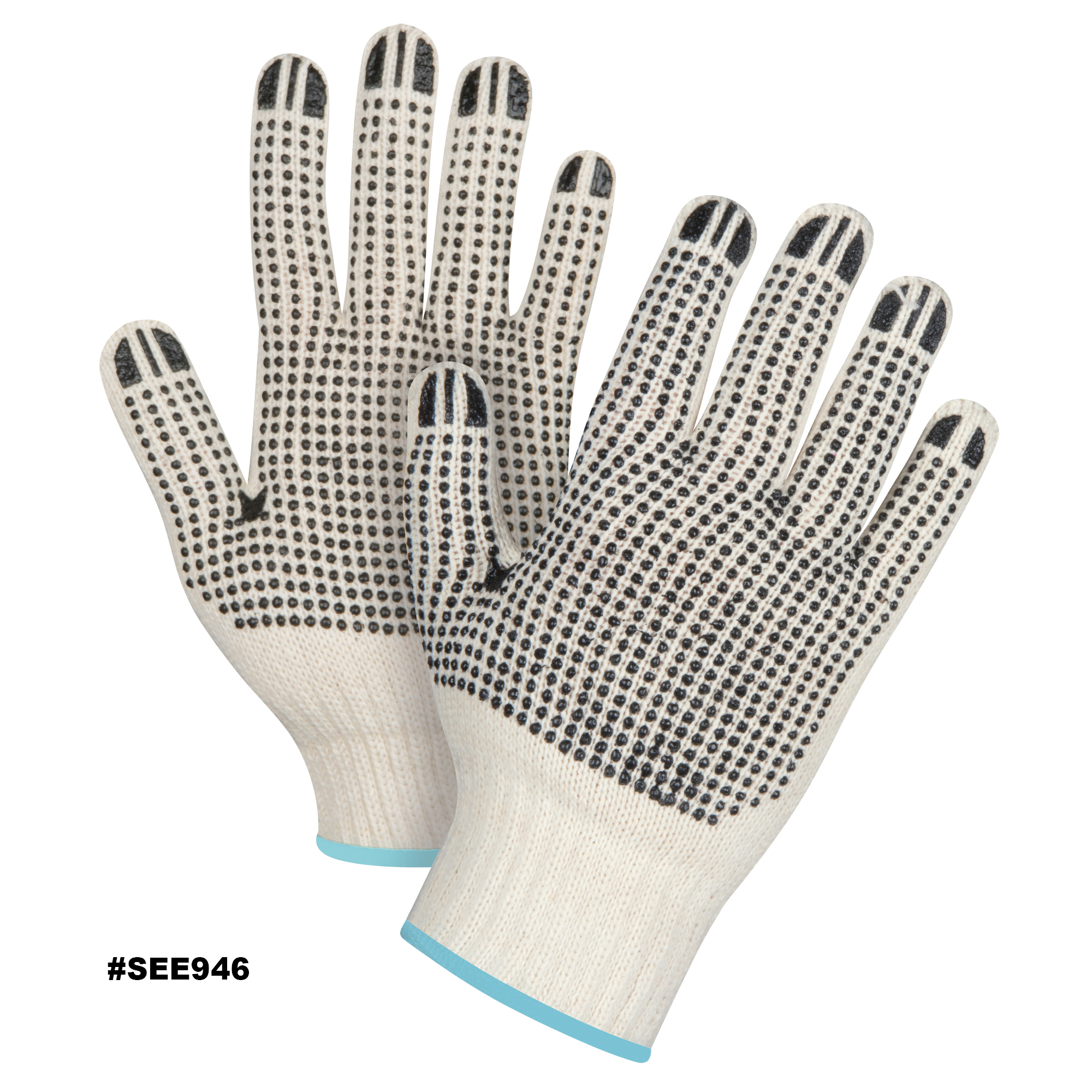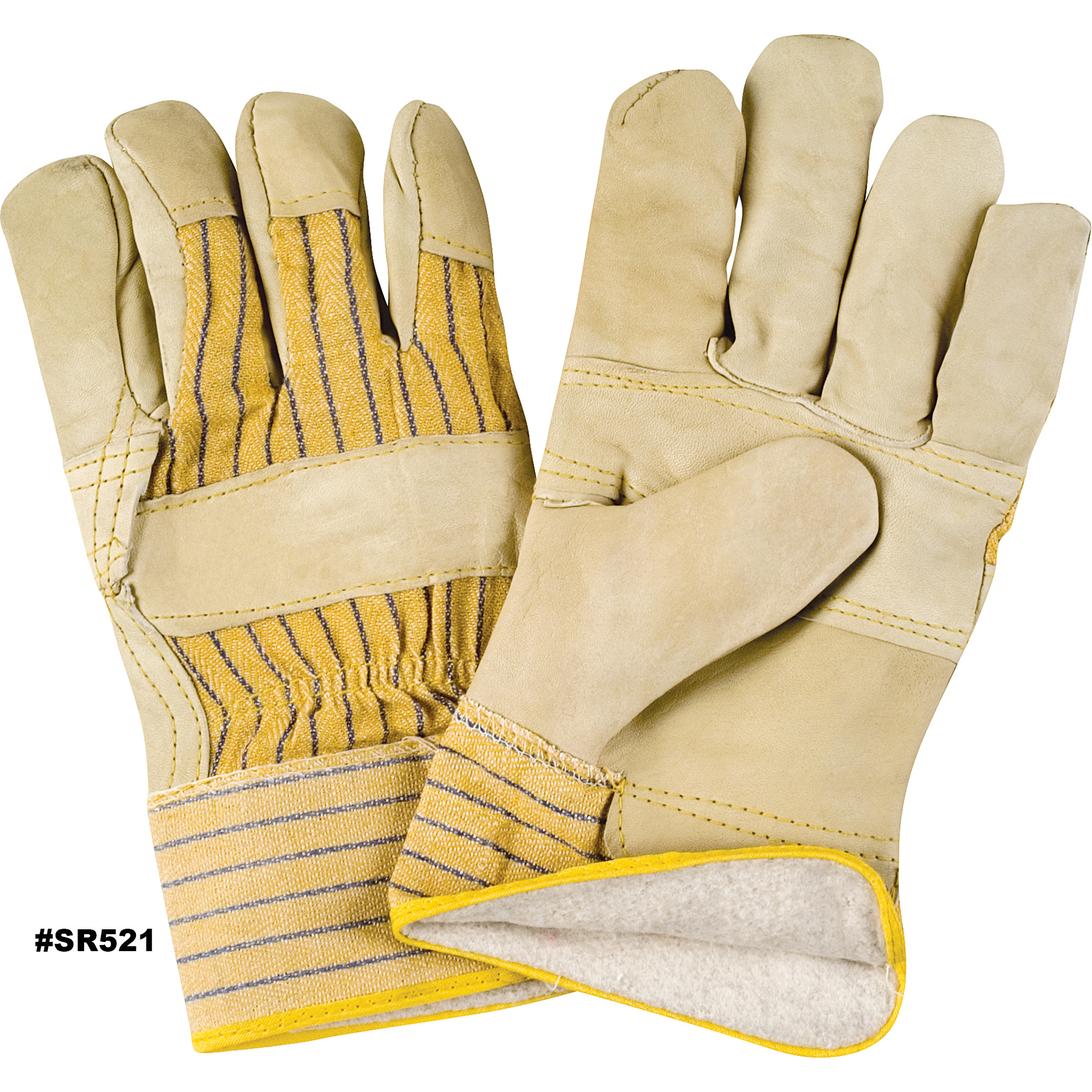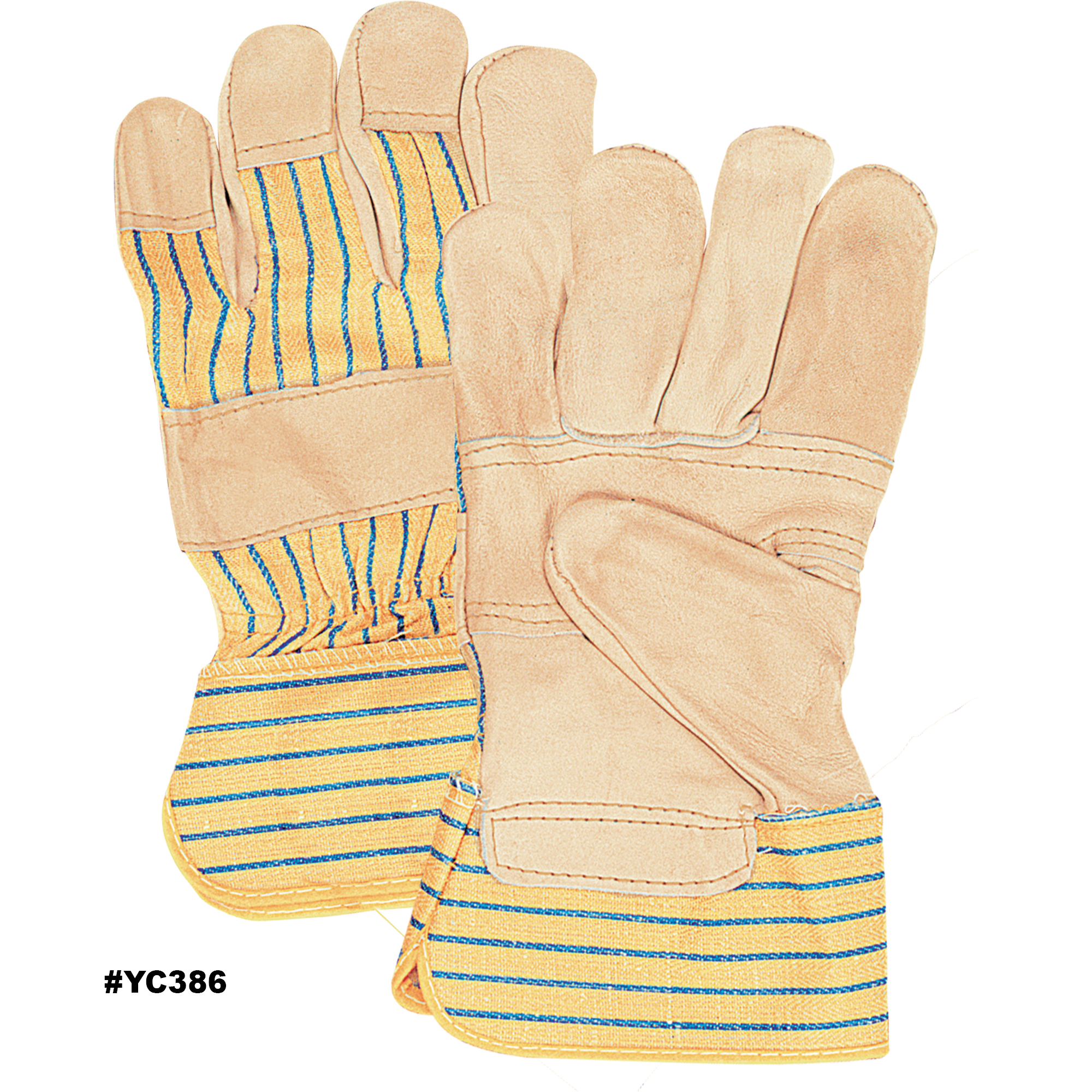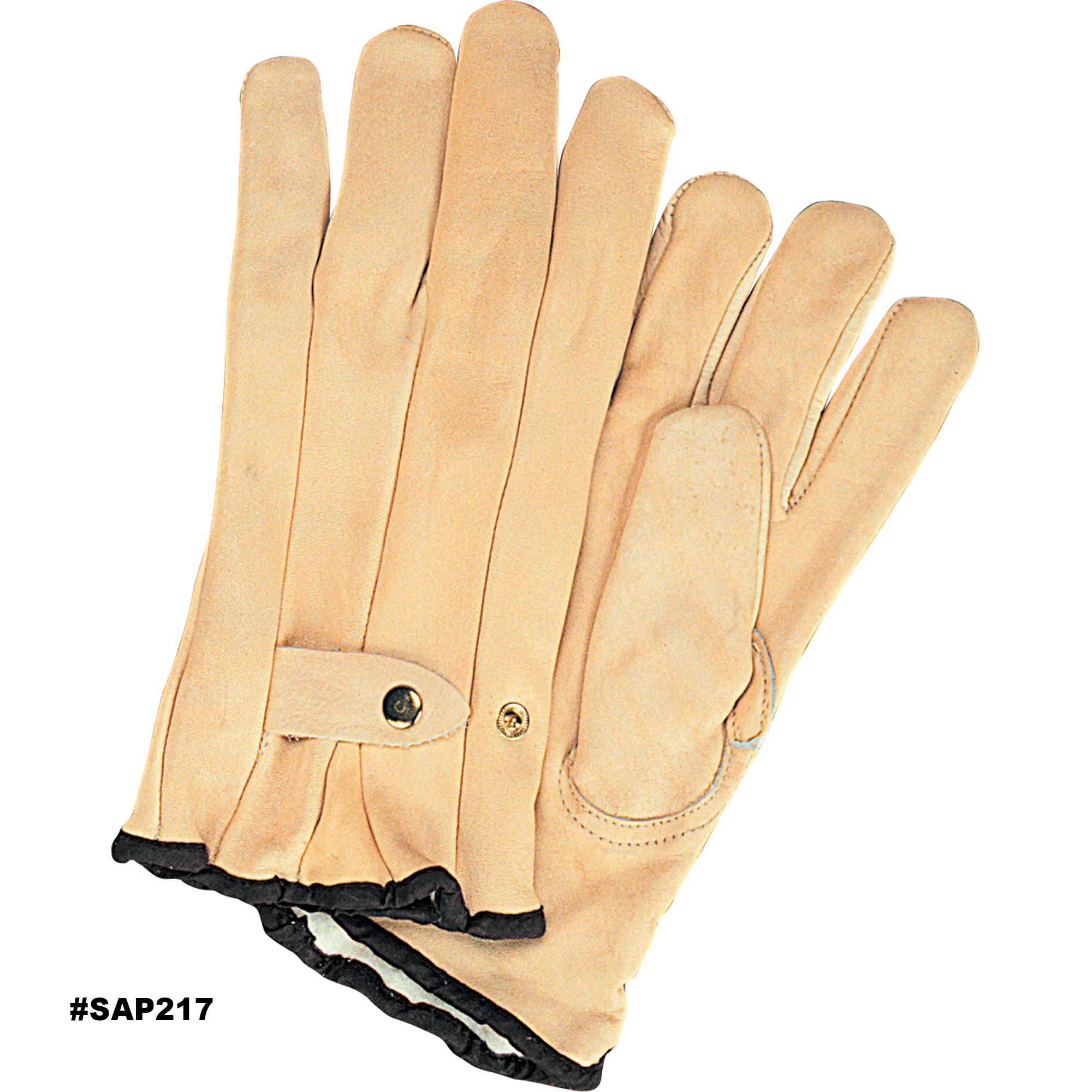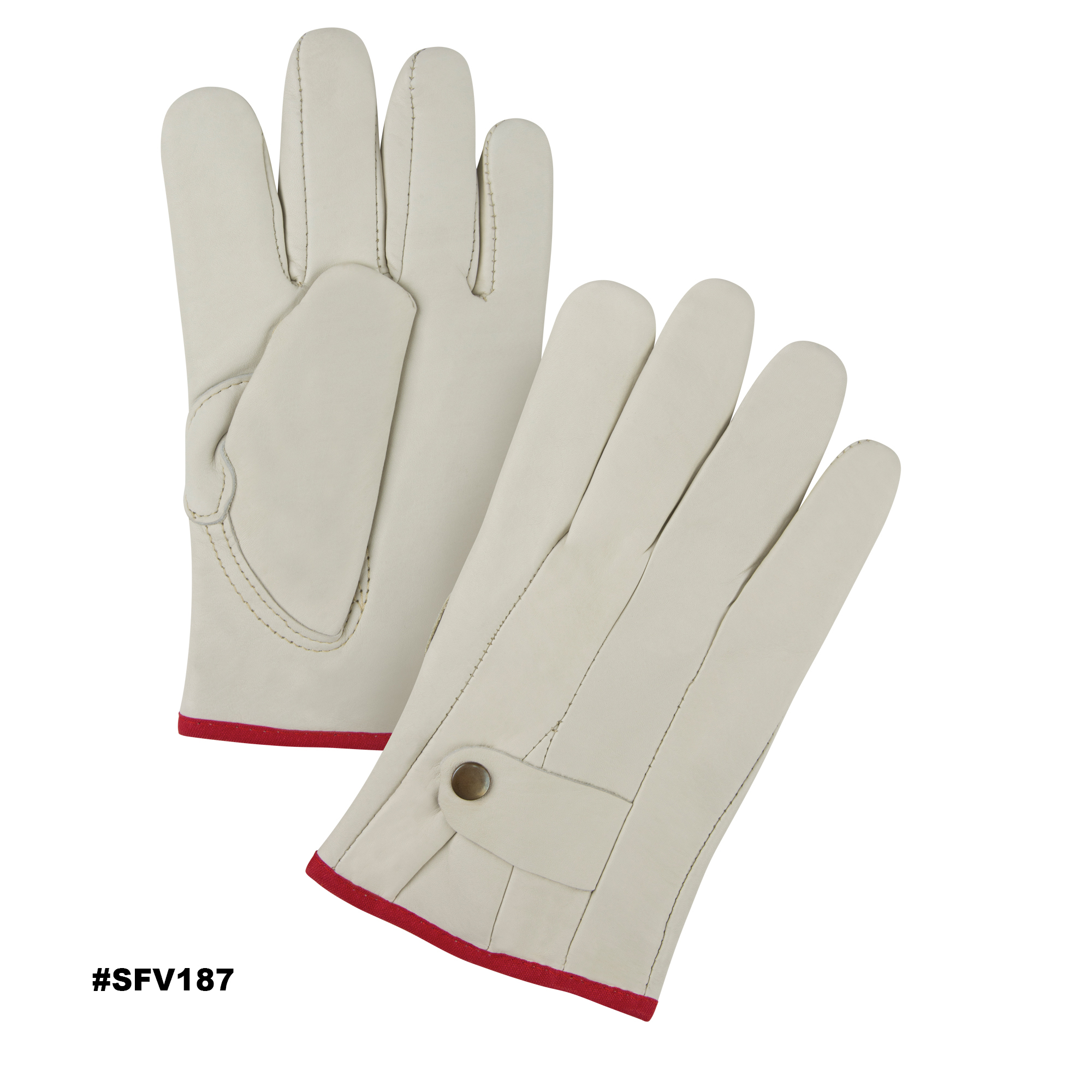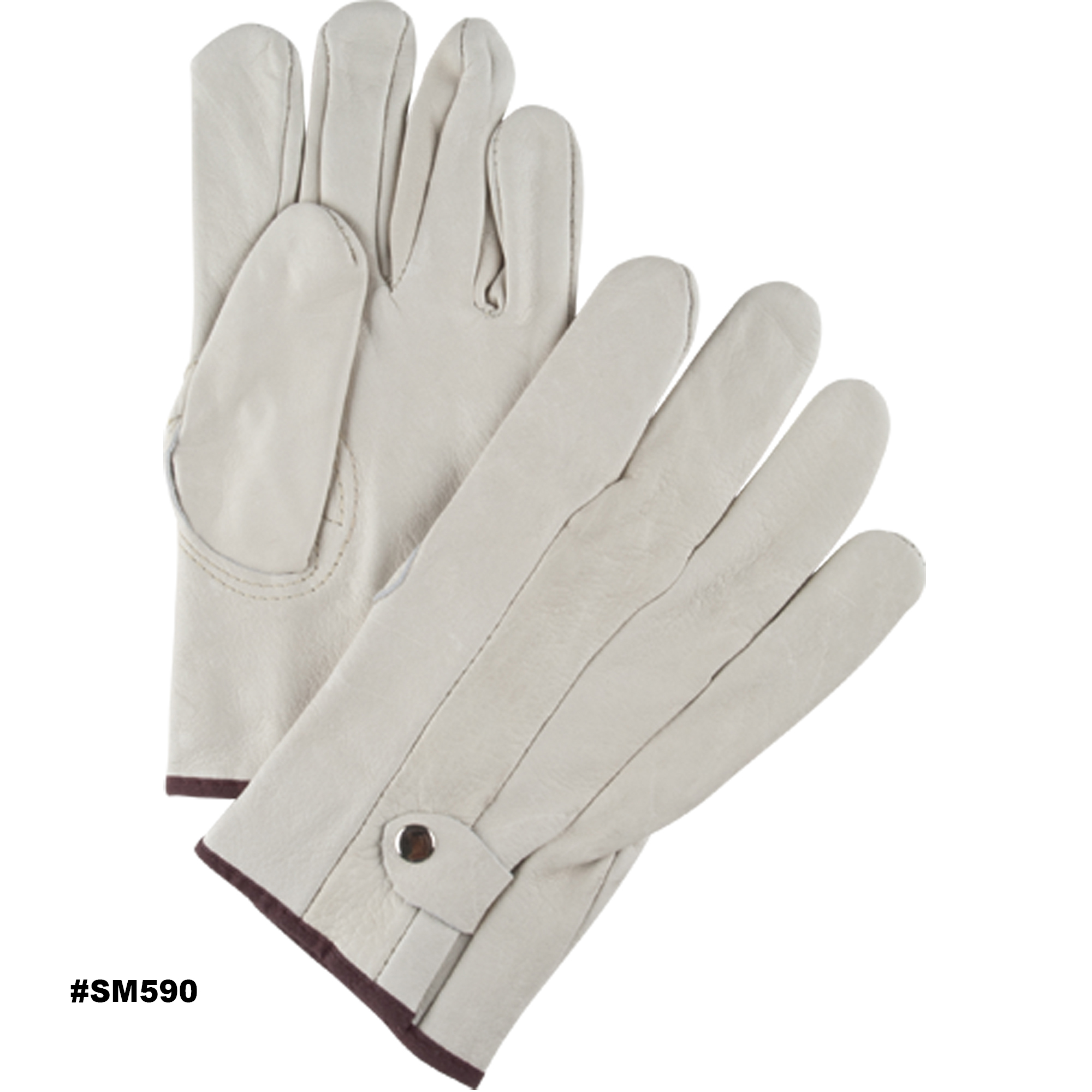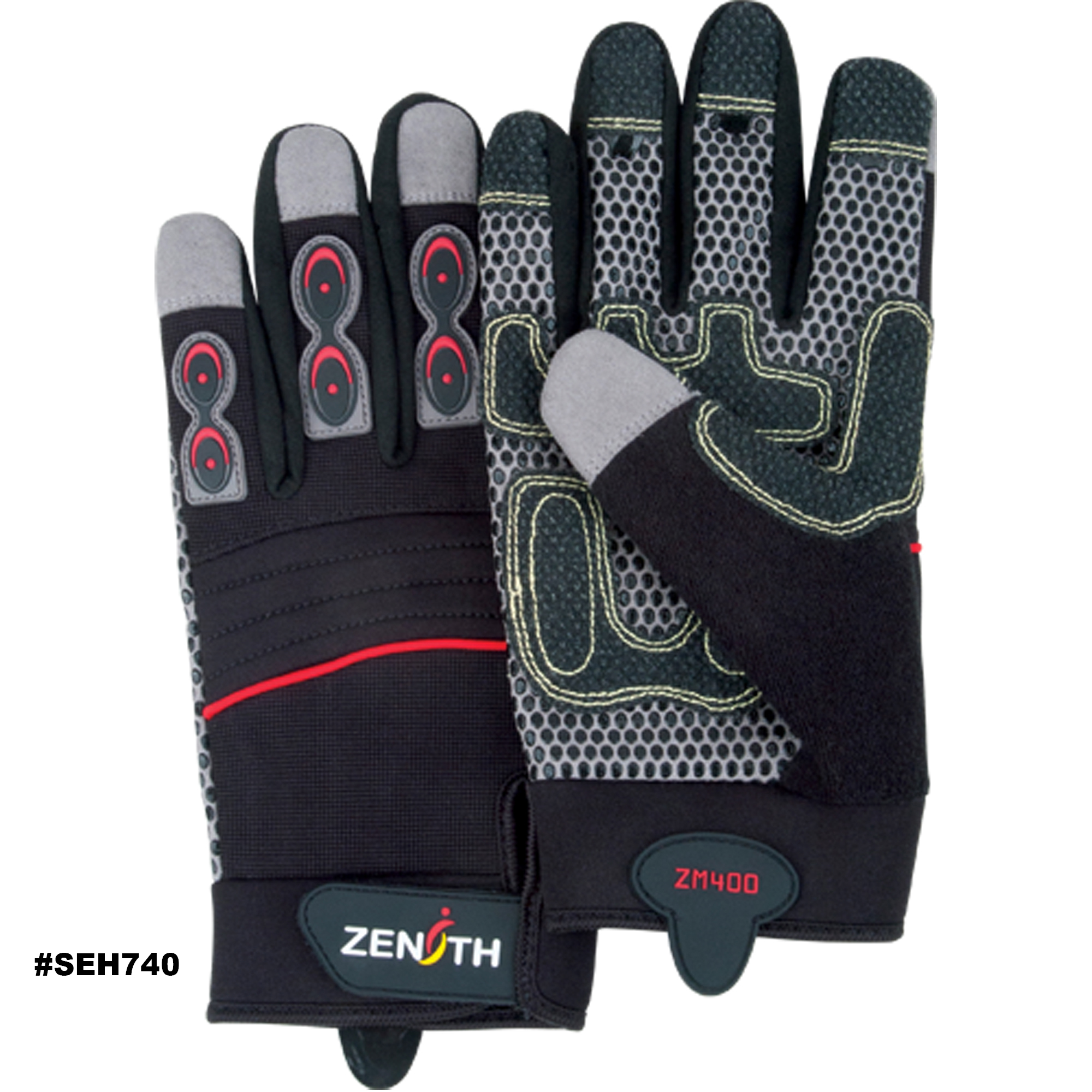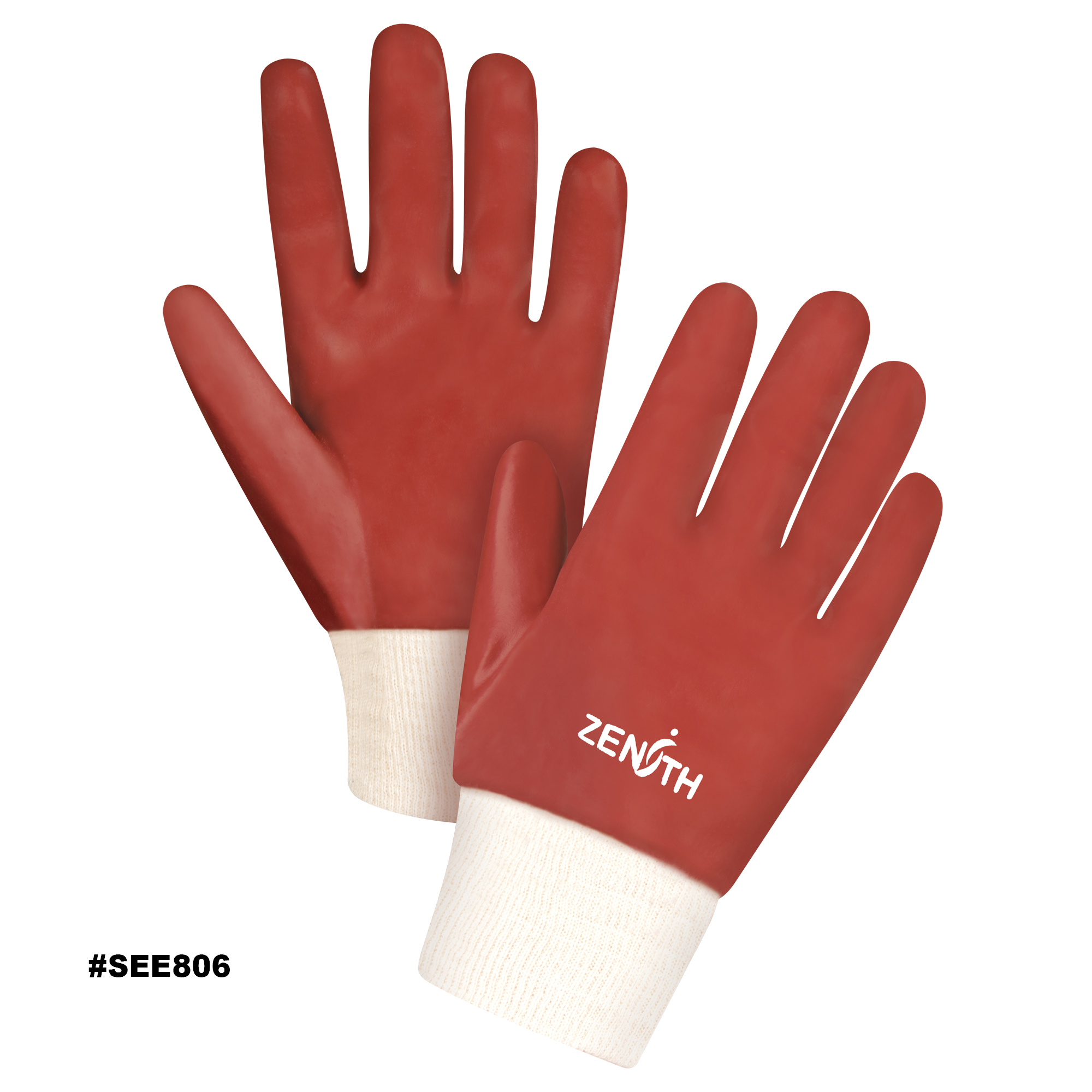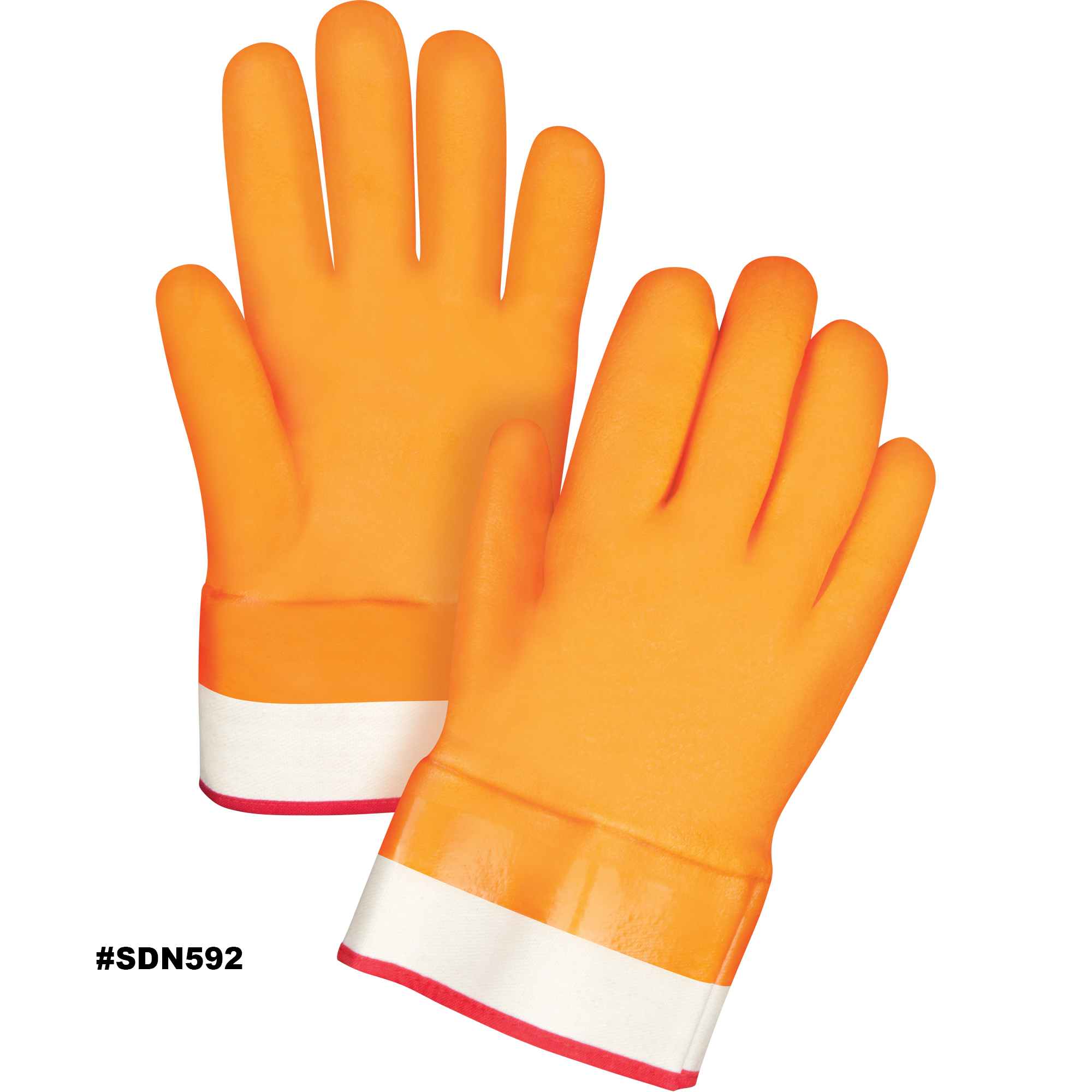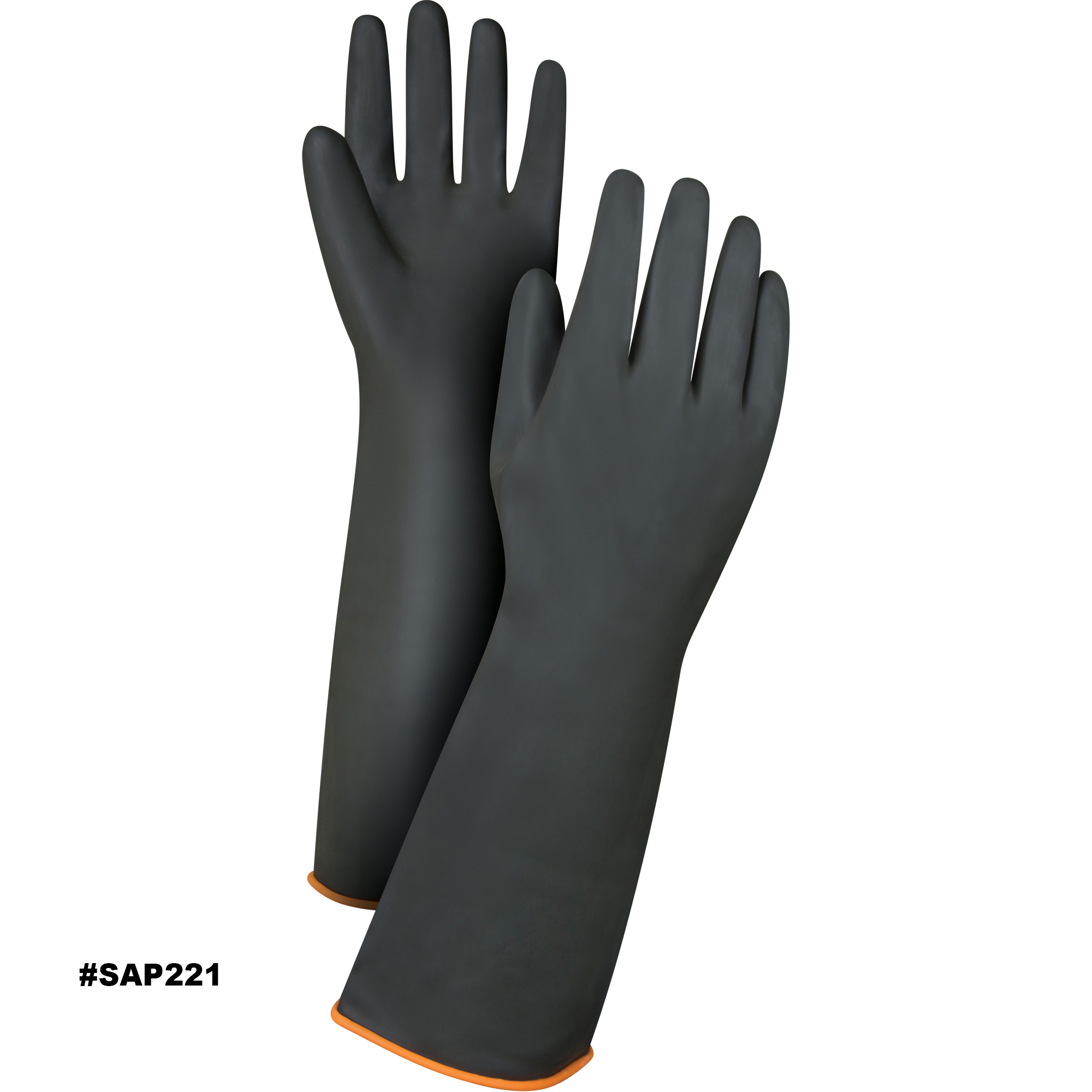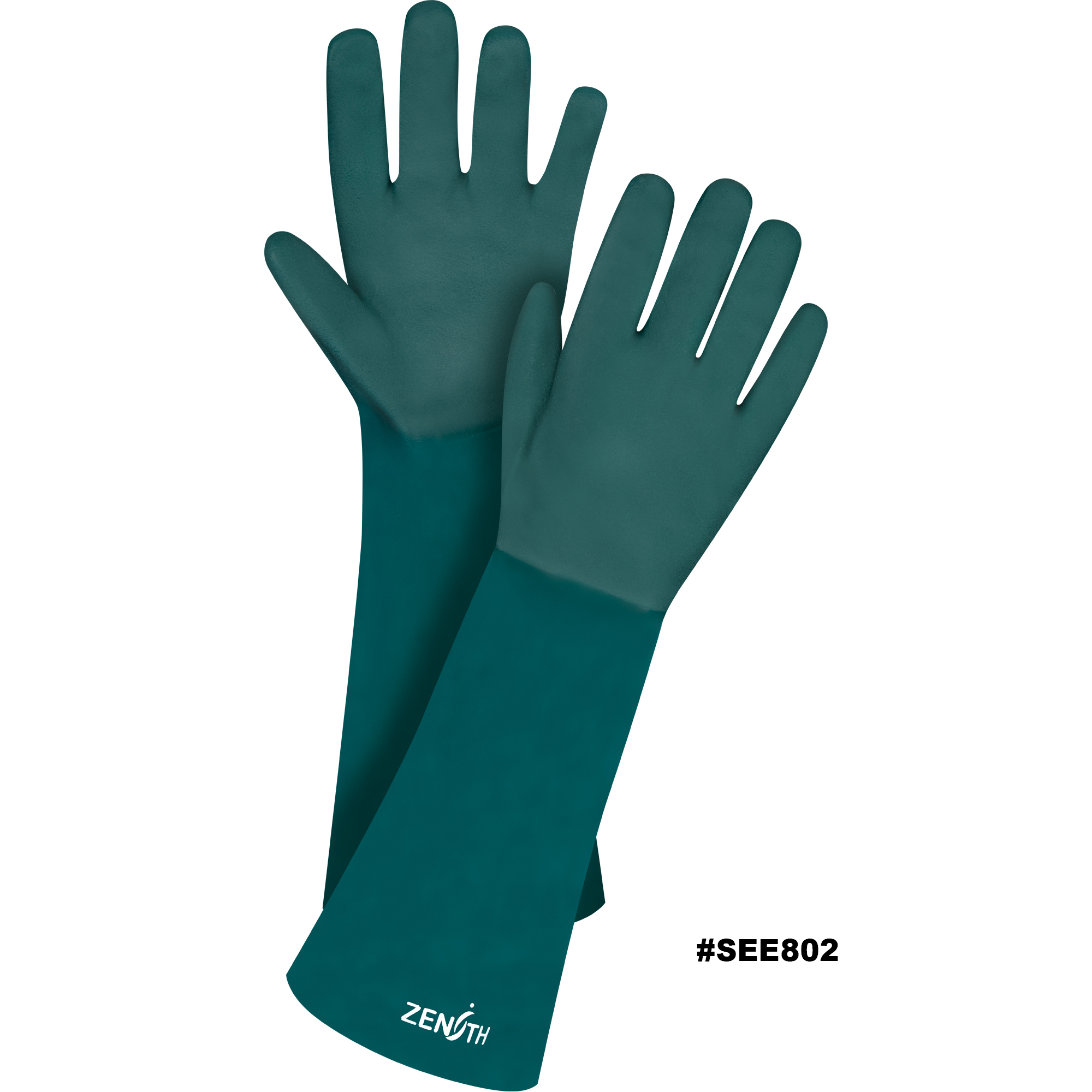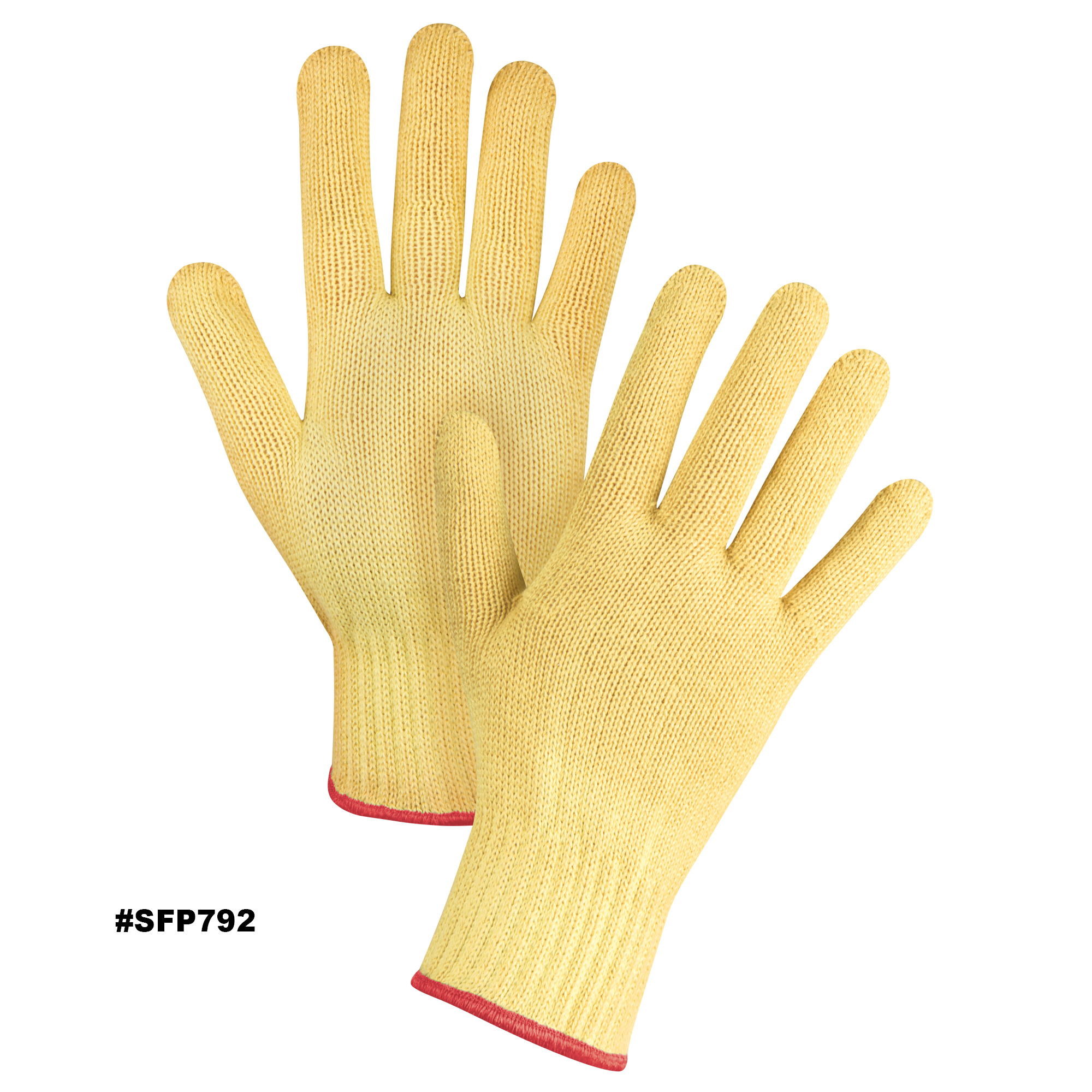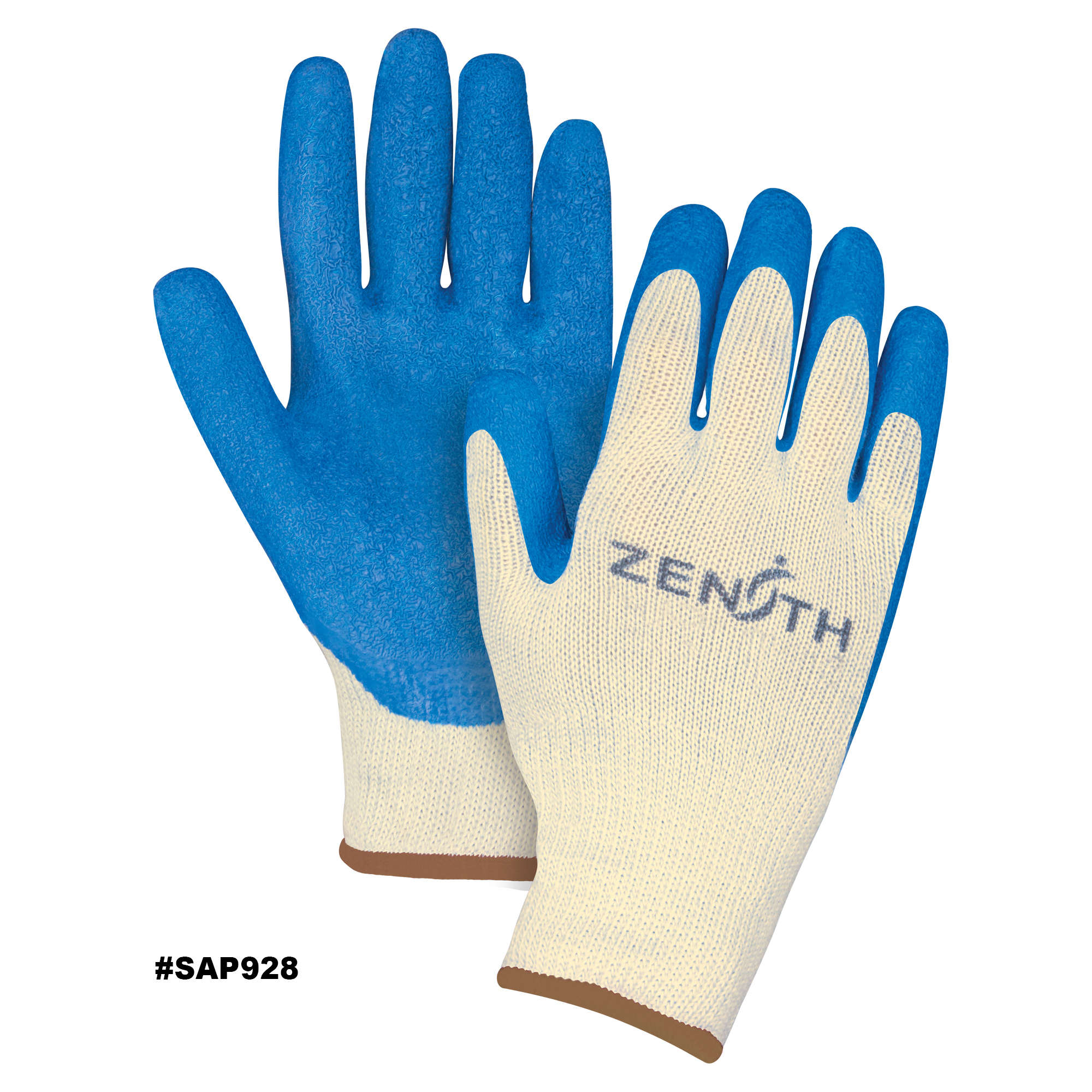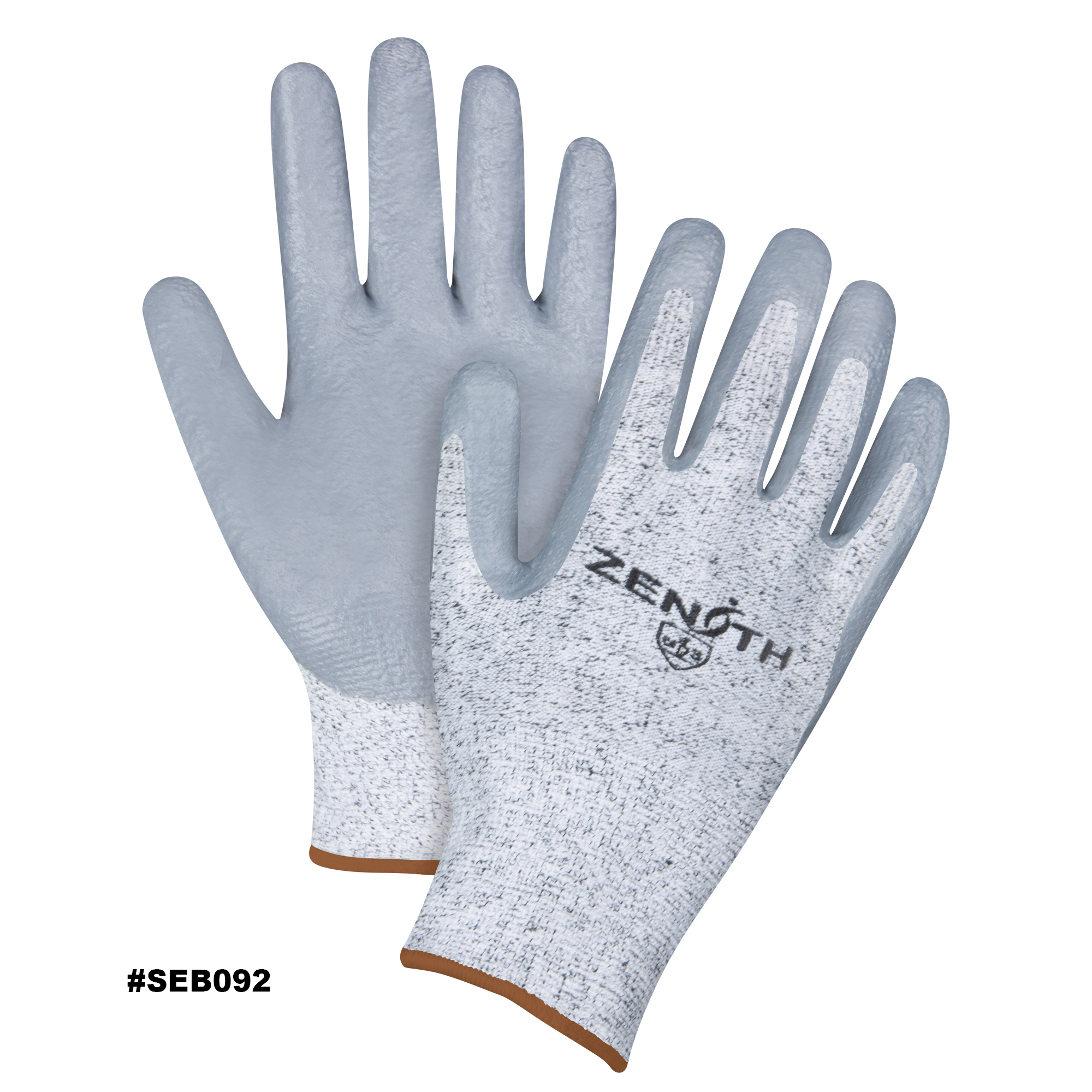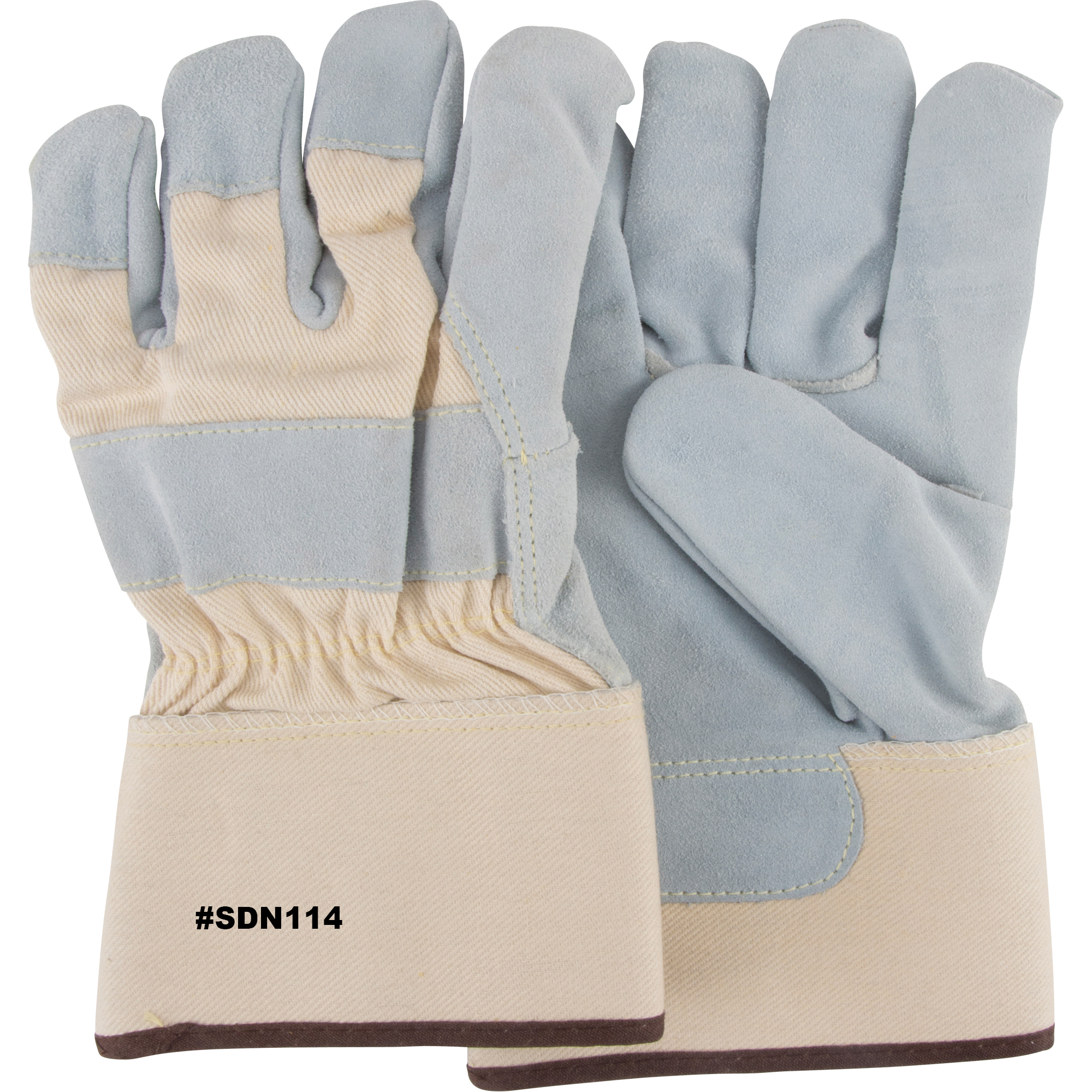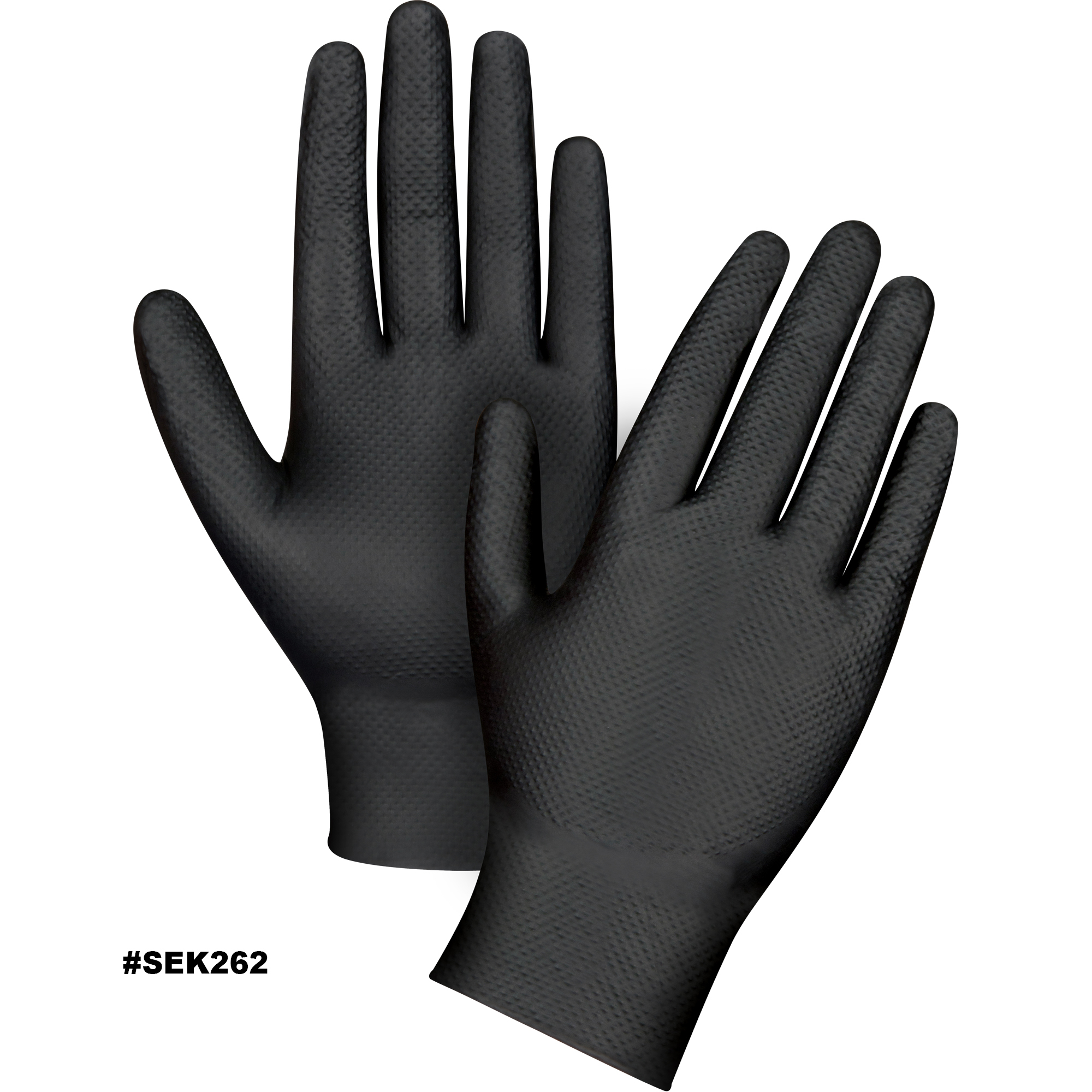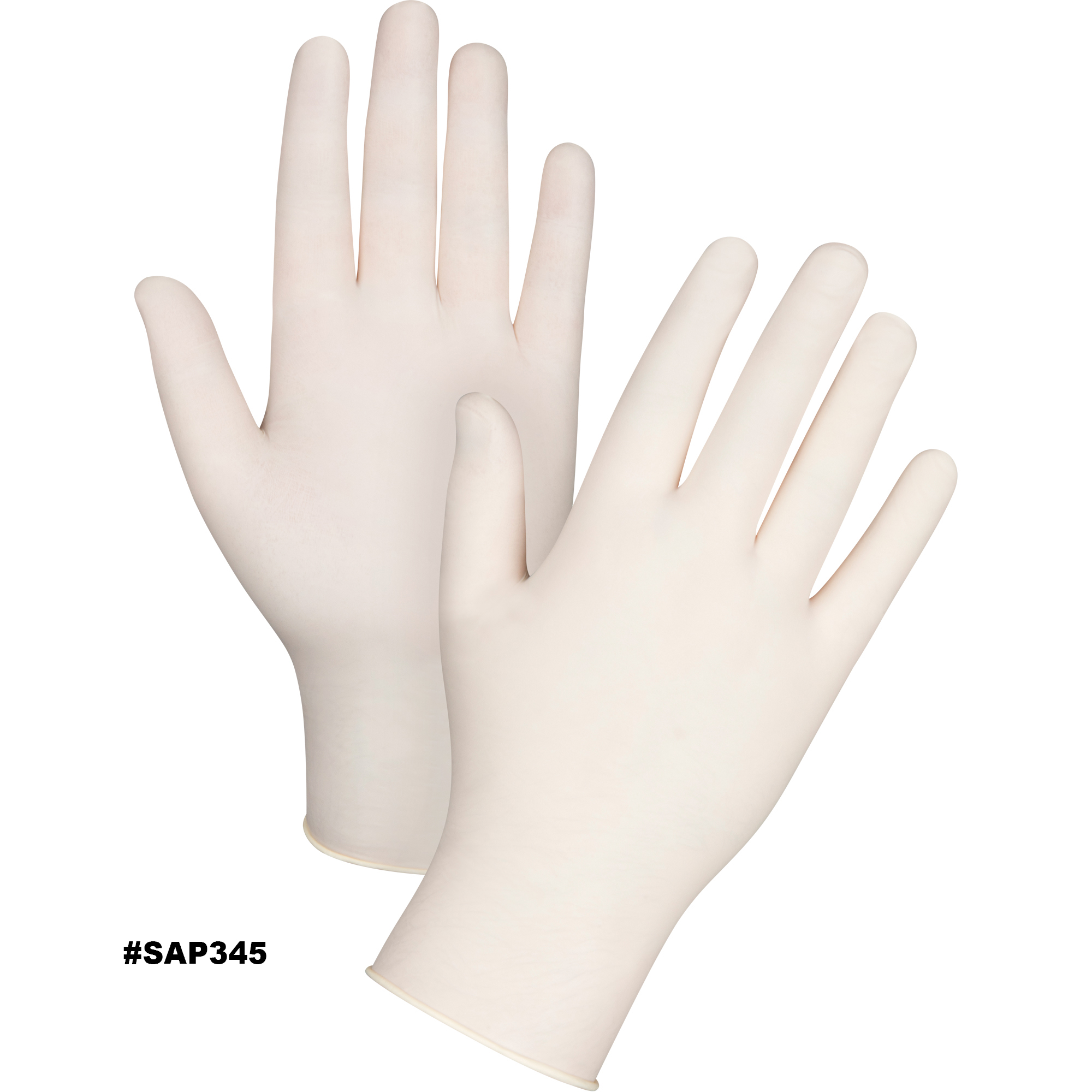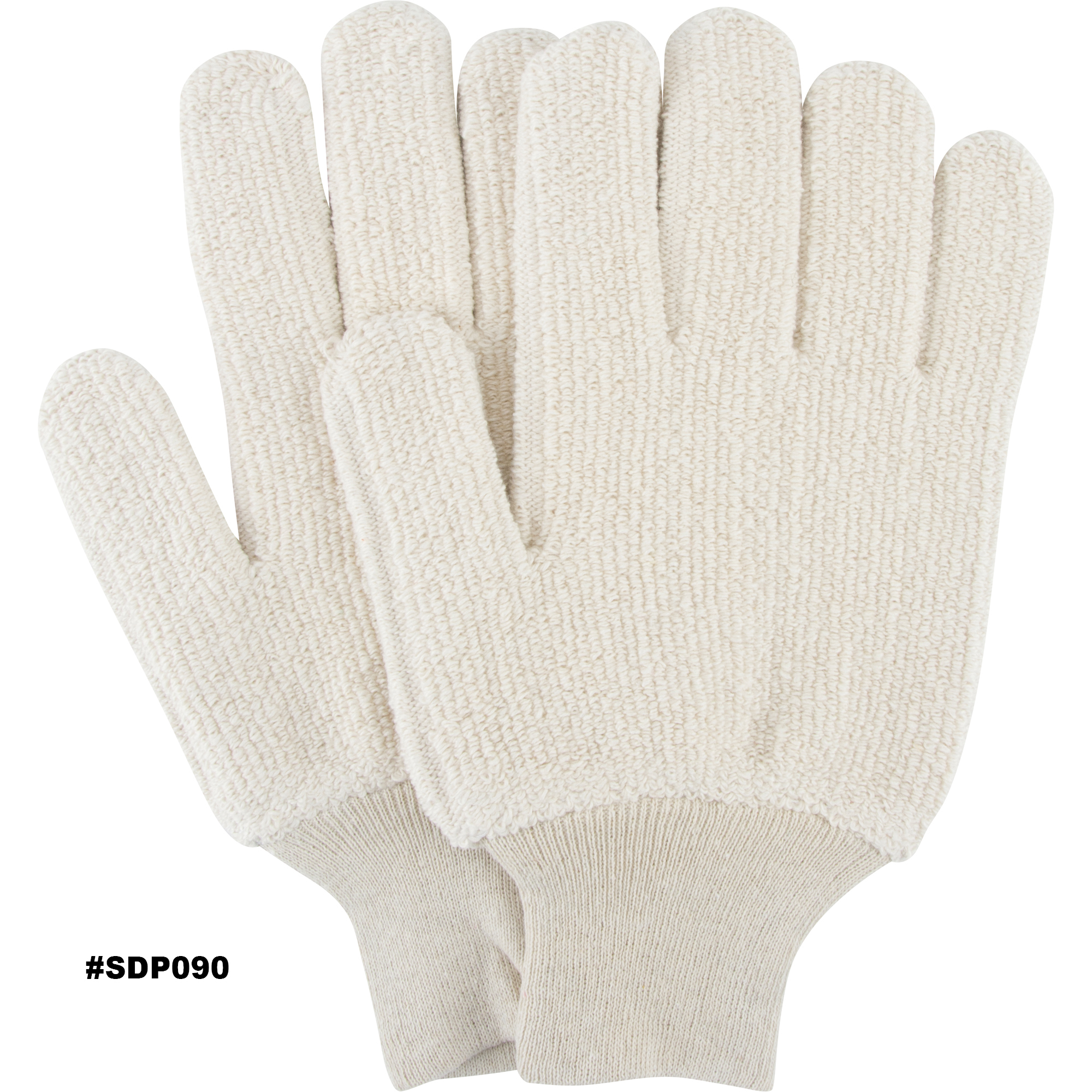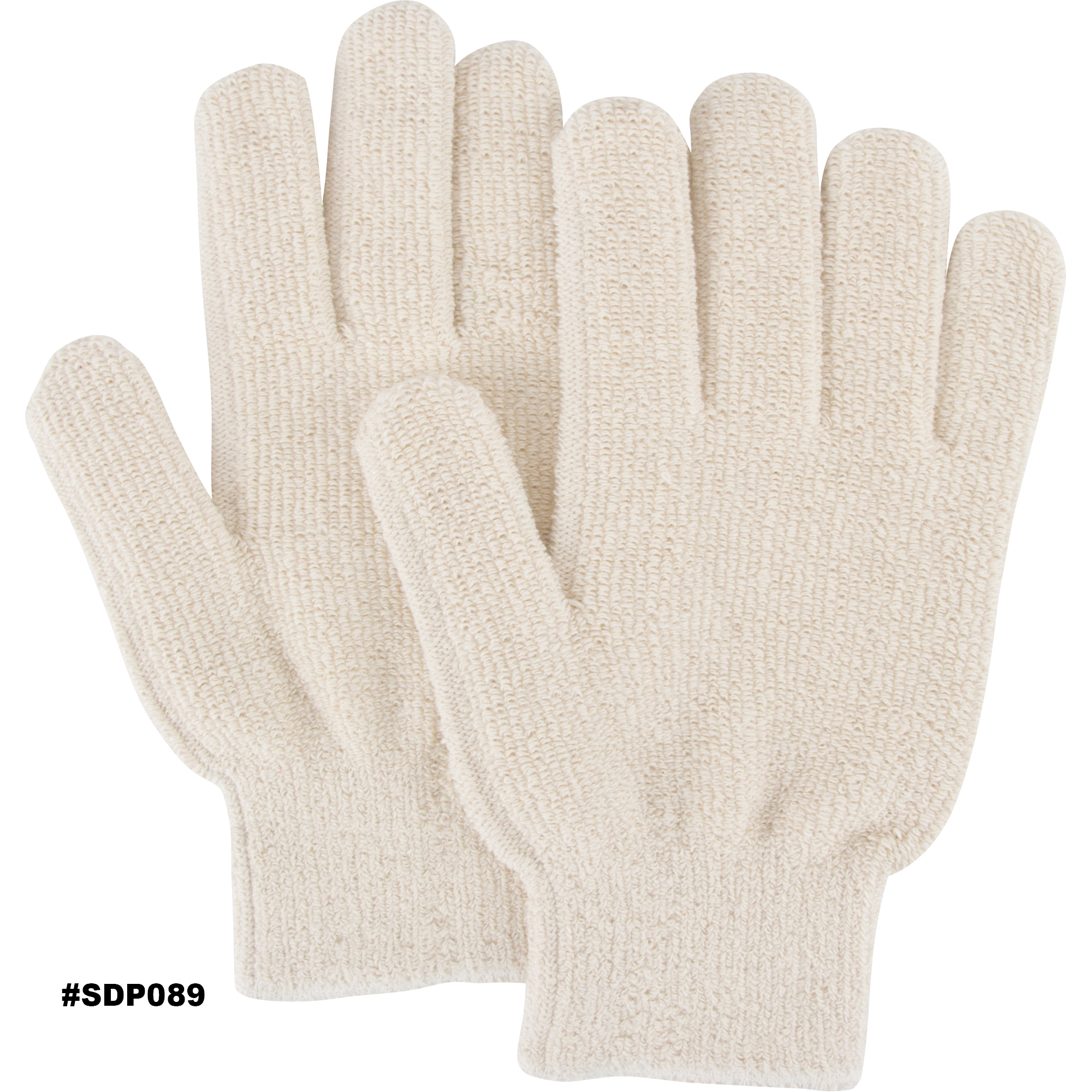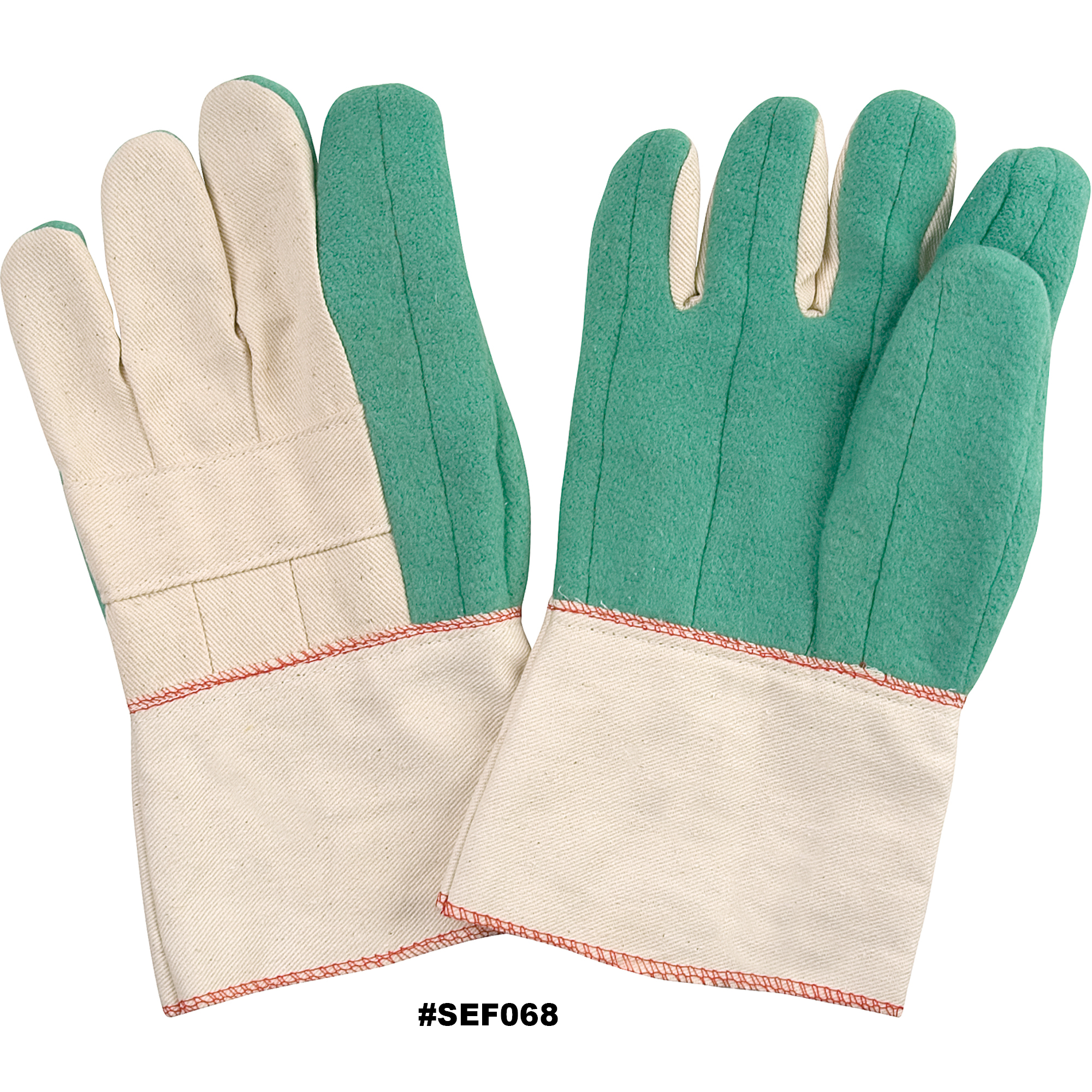Fabric Gloves
Usually the more economical choice, fabric gloves are made from woven cotton or cotton-blends in order to protect the user against slivers, abrasions, and mild temperature variances. Fabric gloves are common in industries that require a firm grip without losing dexterity in the hand, and is usually the glove of choice for those working in coolers and fridges. Zenith fabric gloves are made with no-lint or low-lint materials and methods to ensure gloves to do not contaminate sensitive surfaces.
Fabric gloves are also used as inspection gloves on assembly lines to prevent contamination from the workers. Fabric gloves in general are not rated to be used in environments where chemical, cuttting, and static electricity hazards are present. Some string knit gloves have a silicon, polyurethane, or nitrile lining to the palm of the hand, but that does not mean these gloves make the situation safe when working with electricity or where static electricity buildup is common. Palm linings are for better grip on slippery objects and does not have the capacity to handle high voltage electricity without injury to the person wearing the gloves. Fabric safety gloves are also used as a glove liner in cold-weather environments or warm-weather environments where the liner can be used to absorb sweat.
Inspection Gloves
Inspection gloves are worn in assembly-line work when making final inspections to prevent workers from leaving finger oils, smudges, or marks on fragile, clean, or sensitive materials. They are made of low-linting or no-linting materials. Light-duty gloves are thinner and more tactile than heavier duty gloves. Heavy-duty gloves are worn when protecting parts is the primary importance. These gloves are worn where cuts, punctures, static discharge, and chemical contact is not a concern, unless the glove manufacturers specifies otherwise.
Fully cotton-fabric inspection gloves are soft, comfortable, but do not handle wet environments well. When a nylon blend is added to the cotton, fabric inspection gloves become stretchier and better fitting. Nylon-cotton blends don’t hold as much water as full-cotton gloves, so in damp environments, consider a nylon-cotton inspection glove.
Inspection gloves also come as hemmed or not in the wrist area – open cuffs allow the user to remove and put gloves on easier, while knitted cuffs hold the glove to the wrist snugly.
String Knit Gloves
String knit gloves are an expansive glove category and are known as the mutli-tool of the glove world. Sometimes colloquially referred to as a cotton glove, string-knit gloves come in a variety of fabric blends and sometimes offer cut, puncture, or heat protection to an extent.
String knit gloves are affordable and offer more dexterity compared to leather gloves, often to the extent that string-knit gloves are thought of as disposable after they’ve been worn for a day. These kinds of gloves also offer superior breathability against any other glove category, as their woven structure allows air to move over the hands without a chilling effect on the body.
Another advantage to string-knit gloves are their weight. Often made from lighter-weight blends of cotton, string-knit gloves easily become an extension of the worker’s body without adding to the day’s fatigue. These gloves are also ideal for modest budgets and can have their costs dramatically reduced if you forego a hem on the glove cuff.
Leather Gloves
Leather is a material that offers a good grip, resists sparks, and protects against sharp or abrasive surfaces. This protection even continues when the glove is exposed to moderate levels of heat, such as the heat from welding or the friction from a rope passing through the palms of the gloves while lowering loads. Zenith leather gloves are made from smooth, top-grain leather for durability, dexterity and some oil and water resistance.
Cowgrain glove styles are of a heavier weight and therefore more durable, while pigskin is notable for its breathability and ability to return to its original softness after becoming wet. Leather gloves offer high durability, function, and a great fit, but they are known to harden or shrivel if exposed to too much heat. They can also dry out hands when they’re not paired with a liner that serves as a barrier between the skin and the raw leather.
This style of glove is largely used while welding and is available with a variety of built-in liners, such as Kevlar or winter lining, which makes it a very well-rounded choice for industrial hand protection.
Fitters Gloves
Just because conditions got worse doesn’t mean the day is over. Zenith fitters gloves are designed for construction, fabrication, and cold material handling. This type of leather glove provides superior abrasion resistance, warmth through a cotton or fleece lining, and protection of the lower forearm with a leather cuff. Some glove models use a rubberized or plasticized cuff to provide support and protection against cuts, chemicals, or burns. Oil and water are repelled easily with leather gloves, and can be treated to fit the user’s hand uniquely.
Most fitters gloves use full-length leather fingers that are designed to keep dexterity with small parts without sacrificing protection against abrasions, cuts, chemicals, or otherwise. Knuckle straps and palm patches add to the construction of Zenith fitters gloves, creating support for the hand and increasing product longevity. Since fitters gloves tend to repel water, they are suitable for damp environments and hold up well against water damage unlike split-leather gloves, which tend to shrink and stiffen when wetted.
Ropers Gloves
Ropers gloves are your standard ranch work gloves that find a home in warehouses with forklift and construction equipment operators, behind the wheel of a transport truck, or on the farm putting in a day’s sweat. Not to be confused with fast-roping gloves, ropers gloves are made from extremely durable cowhide that is treated to provide exceptional abrasion, oil, and water resistance. Zenith ropers gloves come in a smooth finish that looks as good as they work, complete with a wrist snap strap to maintain composure and tactility.
For wearers that require greater touch sensitivity, roper gloves can come in a cotton-blend fabric that stretches, breathes, and insulates against cooler temperatures out in the barn. Similar to a bull riding glove, roper gloves are meant to fit the hand snugly with very little room, if at all, in the fingertips and palms. Protection from abrasions and the elements are the goals of roper gloves, and they should not be used in chemical, flammable, or corrosive environments unless stated otherwise by the manufacturer.
Performance/Ergonomic Gloves
Otherwise known as mechanic’s gloves, ergonomic gloves are usually designed with a task or profession in mind. Features of these gloves can be changed in order to provide protection under different circumstances, and they are without a doubt the most comfortable of the glove categories to wear. While leather and fabric gloves tend to stretch, stiffen, or otherwise deform, performance gloves are manufactured with materials that maintain the hand shape and mobility in almost all occasions.
Synthetic leathers are commonly used on the palms of performance gloves for its relative cheapness and superior grip. Premium designs feature grain leather for better abrasive resistance, patterns on fingertips to improve dexterity, stretchable nylon knuckles , and Velcro wrist-straps to create an adaptable and effective fit. Ergonomic gloves are ideal for automotive and small part manufacturing, but take care to avoid chemicals and other inert liquids as most performance gloves sacrifice surface repellent for breathability and therefore can pose a health risk.
ZM200
- Ergonomic style combined with stylish look
- Hook and loop cuff permits an adjustable fit
- Synthetic leather palm and fingers offer superior tactility and protection
- Stretchable nylon on knuckles improves dexterity and comfort
- Textured patches on palm and thumb permits superior grip and durability
- Applications: Automotive, small parts handling, maintenance, manufacturing, most industrial applications
ZM300
- Ergonomic style and superior comfort
- Grain leather palm and fingers improve tactility and protection
- Hook and loop cuff permits an adjustable fit
- Leather reinforced thumb and fingers offer increased durability
- Improved dexterity and grip
- Applications: Automotive, small parts handling, maintenance, manufacturing, most industrial applications
ZM400
- Ergonomic style combined with stylish look and premium features
- Hook and loop cuff permits an adjustable and secure fit
- Reinforced Kevlar stitching for maximum strength and durability
- PVC dots on palm and fingers for an enhanced grip
- Stretchable nylon on knuckles improves dexterity and comfort
- Ventilation holes between fingers for maximum breathability
- Textured patches on palm, finger tips and thumb crotch increase protection and durability
- Applications: Automotive, small parts handling, maintenance, manufacturing, most industrial applications
Synthetic Gloves
Synthetic gloves are polymers made in a lab and act as an option to the traditional latex gloves, which are not synthetic. If someone’s life is at risk, then there’s no better option for gloves than synthetic. Both nitrile and vinyl gloves provide allergy-free glove protection, which is great news considering about 1 to 6 percent of people in North America have a latex allergy. Latex allergies can develop at any point in a person’s life and can cause severe reactions if not handled properly. People who work with latex the most are in the healthcare industry. When we look at those numbers, we see that about 8-12 percent of health care workers will get a latex allergy, meaning nitrile gloves are the go-to choice!
If you’re on a budget, then vinyl gloves (PVC) are the most economical option. Easy to change out – making it perfect for the food service industry – vinyl gloves are a great option if you’re looking for a simple barrier between your hands and the environment. If the environment is hazardous however, vinyl gloves are a poor choice due to their ill fit, lack of surface protection against microorganisms, and potential to react with chemicals. Nitrile or latex are the choice for high-risk situations, making them the strongest, most reliable disposable gloves on the market. Zenith’s line of disposable gloves have been a mainstay throughout the COVID pandemic for healthcare operations around the globe thanks to their trusted quality and reliable performance.
Chemical
Chemical-resistant gloves are made of rubber polymers that withstand exposure to liquid chemicals such as acids, oils, and solvents. They are worn by workers who prepare or manufacture chemicals, apply coatings to raw materials, perform biomedical research, and work in oil and gas industries.
Some gloves provide additional protection, including resistance to heat, cuts, impact, and cold. Antistatic chemical-resistant gloves are worn in manufacturing where static discharge is a concern, such as when applying chemical sprays and finishes or when installing wiring where arc flash is not a concern. Cold-condition gloves are used when handling cold items (such as frozen food) or when working in cold weather or cold environments.
Cut-Resistant
Cut-resistant gloves protect the wearer from lacerations and some punctures caused by handling sharp items, such as metal and glass. Knit gloves are made of materials that protect against a range of cut risks, from handling light cardboard to appliance assembly. Leather cut-resistant gloves have a liner or cut-resistant stitching to protect workers’ hands. They are abrasion-resistant and protect against contact with incidental heat and sparks.
Chainmail gloves are made from metal mesh and are often worn in food processing to protect against extreme hazards encountered when using knives. Mechanics-style gloves have good dexterity and protect hands from dirt, grime, scrapes, and blisters. Riggers gloves are reinforced to protect workers’ hands and increase visibility in heavy-duty tasks performed on oil rigs and in demolition and construction.
Disposable
Disposable gloves create a barrier between your hands and objects you are handling to keep hands clean and protected and keep oils and dirt on your hands from transferring to the objects. Single-use gloves are thrown away after each task to prevent cross contamination. Thinner gloves offer higher dexterity and better touch sensitivity, while thicker offer more protection for hands.
Single-use disposable gloves are worn in laboratories, food service, cleanrooms and sterile environments, and when cleaning or performing janitorial tasks. Be mindful that some people can be allergic to certain kinds of disposable gloves, so test different glove materials on your hand for a reaction. Disposable gloves come in a wide variety of material and design: latex, nitrile, chloroprene, polyethylene, vinyl, neoprene, and powder or powder-free.
Thermal Gloves
Thermal gloves, sometimes called heat-resistant gloves, can be made of a variety of materials. Lower temperatures only require gloves to be made of cotton or leather. Once temperatures start going above 300°F, cotton begins to enter auto ignition territory. Leather tolerance for high heat tops out closer to 420°F, but many jobs require higher heat tolerances than that. Blacksmiths, glass-blowers, kiln operators, autoclave scientists, and many more jobs require heat tolerances that may go far above the 420°F limit. The North American Standard (ASTM F1060) is how an object’s heat resistance is measured, providing a standardized way for manufacturers to create thermal gloves.
The glove’s rating is determined by the highest contact temperature where time to second degree burn is over 15 seconds and time to pain is over 4 seconds. The standard rates the material between level 1 (under 176°F) and level 5 (608°F). Note: While the test stops at 608°F, the glove may have higher thermal protection. Higher temperature-resistant gloves tend to be made of a Kevlar weave, resisting temperatures up to 850°F. Be mindful that wet heat, like steam, requires a silicon glove to provide appropriate protection. If higher temperatures are present, polybenzimidazole fiber (PBI) is a useful material that resists up to 1300°F.
100°C Rated
Terry-knit gloves provide durability and long wear along with heat and abrasion resistance. The heavy-looped pile construction traps air and makes these gloves excellent insulators and a good choice for handling sharp or rough metal parts.
The Zenith terry cloth heat resistant gloves come in a comfortable 24 oz. heavyweight knit fabric, offering excellent insulation and allows heat to disperse rapidly. The gloves are absorbent to take away sweat, allowing the skin to breathe and naturally cool. Glass-handling, foundry work, and commercial bakeries are common places to find terry cloth heat resistant gloves, although their usage is nearly universal thanks to their safety and lightweight designs.
250°C Rated
Zenith offers two options for high heat resistance thermal gloves – a full cotton glove designed for mill work in 24oz and 32oz, and a 100% Twaron knitted thermal glove that is perfect for steel manufacturing and other industrial hot work. The Twaron glove in particular is flame and cut resistant with a terry cloth liner, offering excellent protection, dexterity, and comfort.
While the hot mill gloves are not cut resistant, they do have high-quality, heavy cotton fabric design with a heavy-duty cotton-lined palm to provide serious heat resistance when grabbing things. The 4″ safety gauntlet acts as extra protection for your lower forearm during work, preventing splashes and spills that could otherwise cause severe burns.



